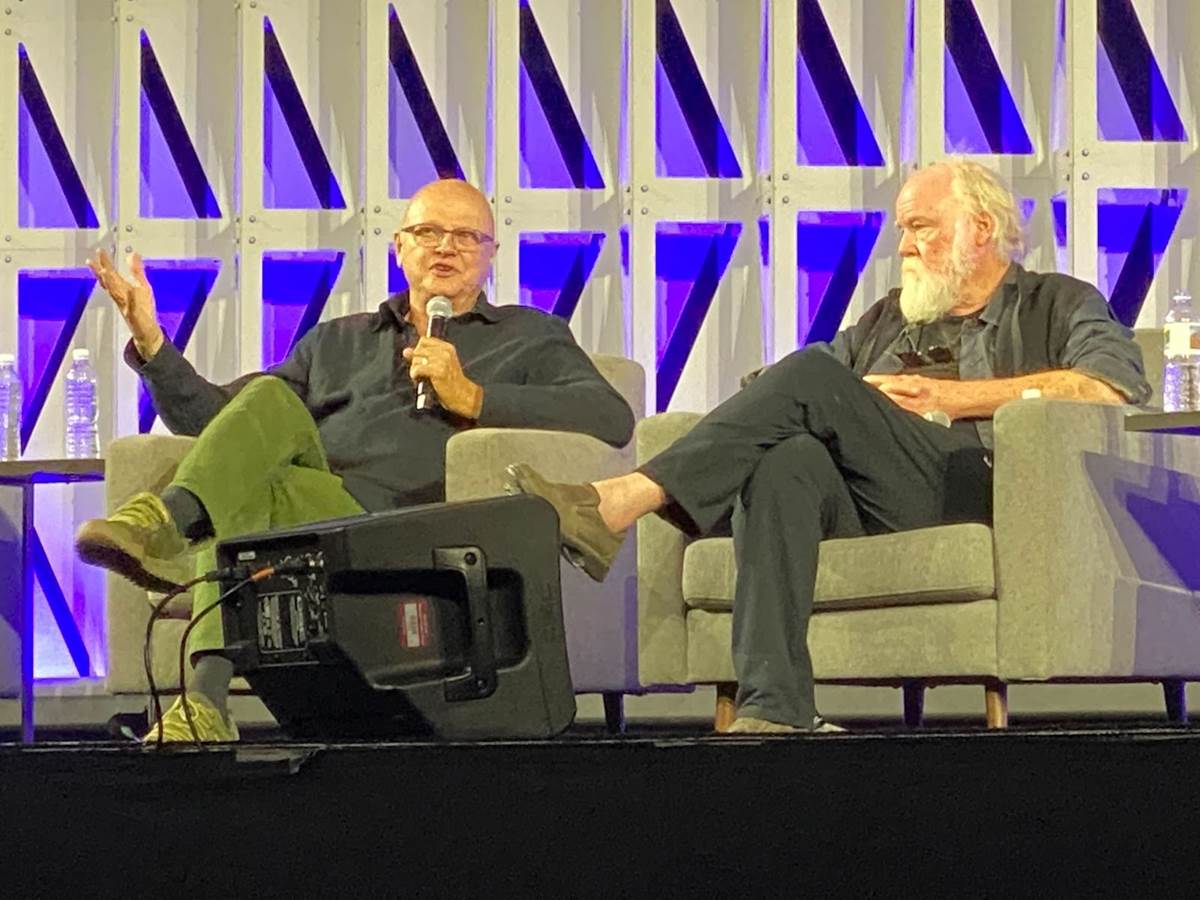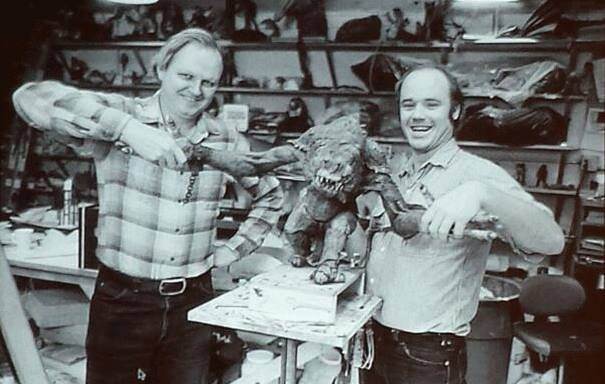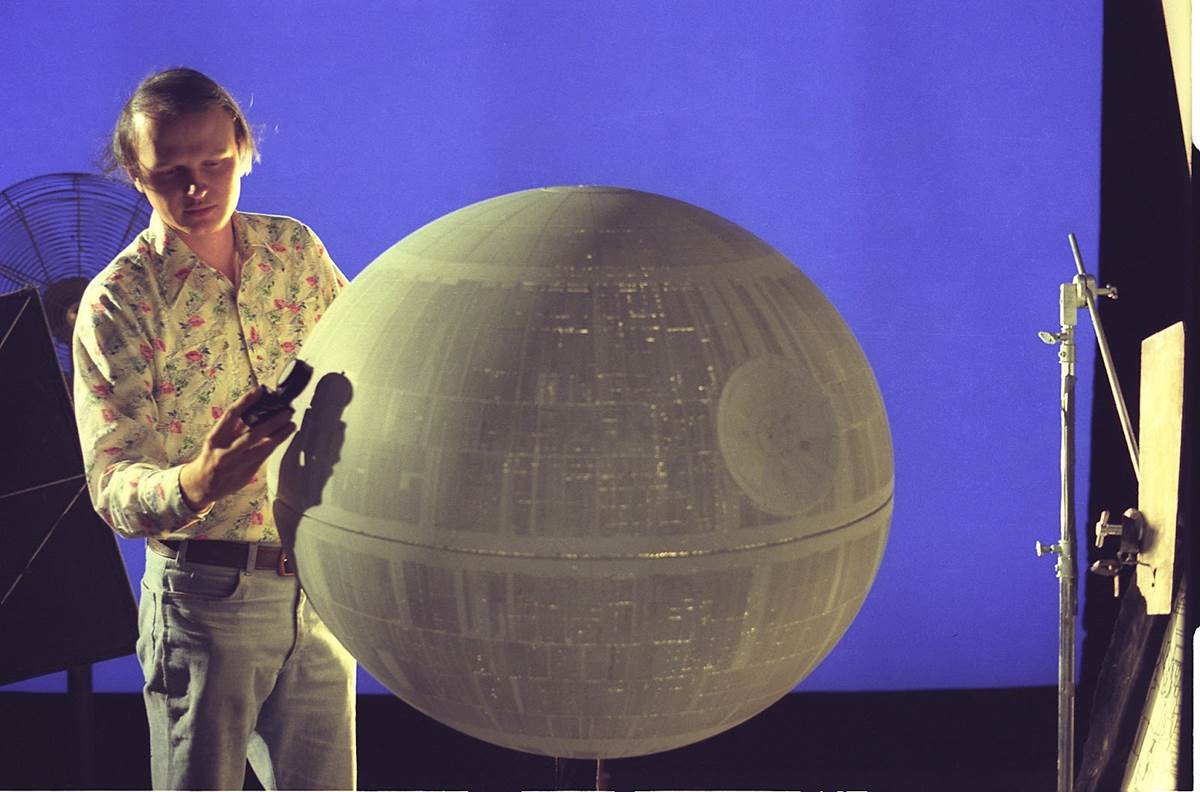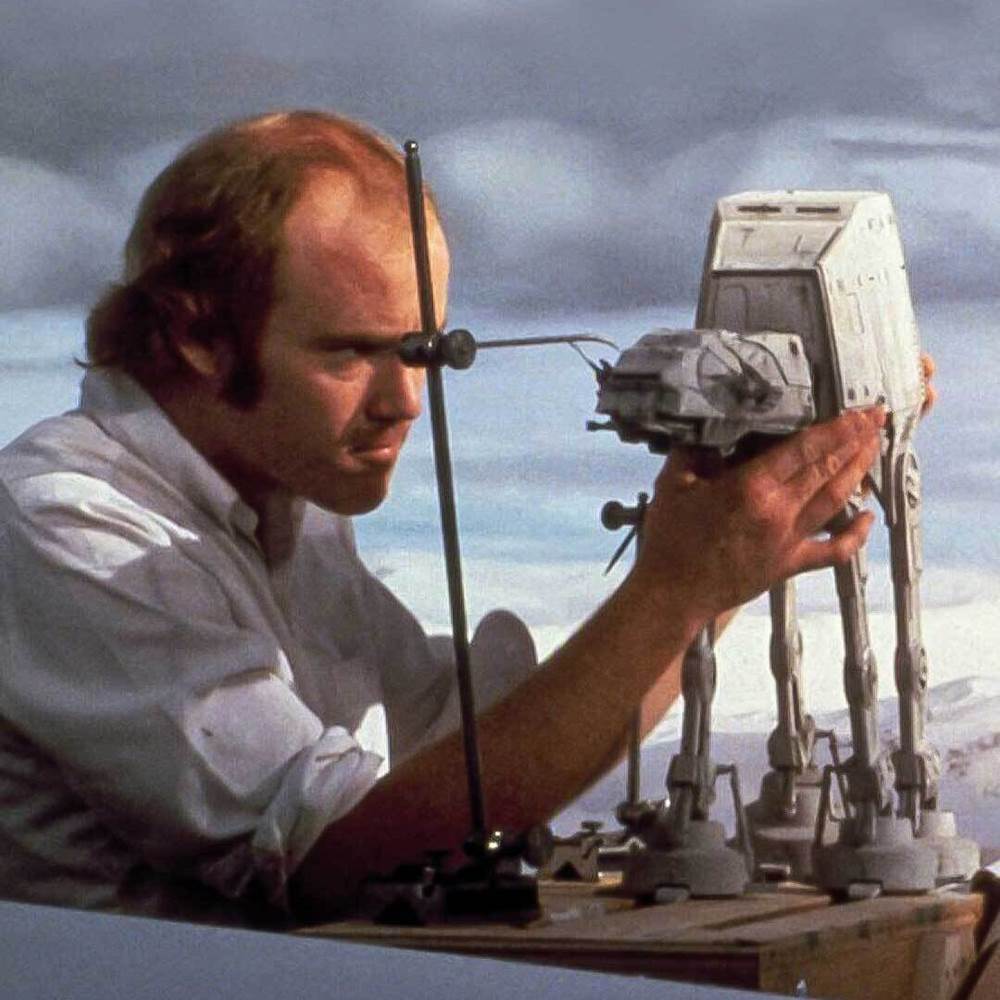Q&A: Visual Effects Legends Dennis Muren and Phil Tippett Discuss ILM and the “Light & Magic” Documentary

Dennis Muren and Phil Tippett as they appeared at Star Wars Celebration Anaheim in May of 2022
It’s undeniable that Industrial Light & Magic pioneers Dennis Muren and Phil Tippett are luminaries in the visual effects industry, having contributed some of the most jaw-dropping, groundbreaking, and simply unforgettable moments in cinema history throughout their careers.
This week Dennis Muren and Phil Tippett participated in a roundtable discussion of their work and their portrayal in the new Disney+ documentary Light & Magic, which chronicles the history of ILM from its revolutionary early years right up through today.
Phil Tippett started off the conversation by talking about his influences at a young age. “We were inspired by Ray Harryhausen’s The 7th Voyage of Sinbad. You would see that once [in the theater], and you wouldn’t see it again for another ten years or so on a small, black-and-white television. So you made stuff up [in your own movies]. You did your own original creations, and you slowly figured out what the process was. Learning stop-motion for me was a vertical climb, unlike the younger people today who have such access to media and all kinds of technology– everything’s at their fingertips. That was really a huge value for us: having to reconstruct things in our mind and use our imaginations rather than having a plethora of things to copy." Later Tippett talked about how technology has evolved since he and Muren began in the visual effects industry. “We were well-educated with the same techniques as Ray Harryhausen, except the technology had significantly changed. But we always have to adapt to technology, no matter what. It went from stop-motion to go-motion to computer graphics. That was pretty much the trajectory, and each time you had relearn. You’re handed this Stradivarius and now you have to learn how to play it."
Dennis Muren expanded upon this idea. “I was rooted in the stuff that [was coming out] in the 20s and 30s– King Kong and stuff, but going on to Star Wars I thought, ‘This is a way too complicated way to do this work. There’s much simpler ways to do it.’ But after being on it for a while and seeing what John [Dykstra] was trying to do and what George [Lucas] wanted, I started to see, ‘There’s an advantage to this.’ I just had never had the money, or the real interest to try and go somewhere else [with visual effects], because I thought what was working was working. The tools were an expression of your art. But then I saw that you can actually change the tools, and maybe the tools can benefit the art. So since that time, I’ve always just been curious, and always looking for new ways to do things. I think there’s room for everything. CG took off because it can do things that you could not do, and still can’t do, with models. The scripts can tell stories that they weren’t able to tell before." On the flip side, Muren has a hesitancy about certain aspects of CGI. “In the CG world, there’s a sameness that you can see. It’s hard to tell where that comes from– some of it is technological: texturing, artificiality. But shot after shot after shot goes by and at some point you get dull. Maybe there’s too many shots, but maybe the expression hasn’t been put into each shot. When you do it the old way, when Phil does it his way or Harryhausen or anybody, you’re setting up that shot and you decide what’s important. Everything is aimed for what is important."
At one point the pair was asked which was the most challenging project they ever worked on, and Dennis Muren replied, “For me, the most challenging one was [The Empire Strikes Back]. We had to put all this stuff together to get that done– all the battles and the walker sequence– everything was quite a real challenge. But that whole period [in the late 1980s and early 1990s when] we were doing The Abyss and [Jurassic Park] and [Terminator 2: Judgment Day], having to learn things I didn’t care about, like the size of film grain… that was quite a challenge."
“Lighting the Tauntauns [and] walkers [in Empire] was really old-school," Agreed Tippett. “The sets of Hoth were model sets, the backgrounds were painted by Michael Pangrazio. None of the stuff looks realistic, but it’s beautiful. It just takes you away. It has a very old-school look with a modern coat of paint on it. A lot of movies aspire for something realistic, but it’s never going to be real. The best you can do is make something hyperreal, which is what filmmakers do all the time. Everything we did was really a prototype; everything we did, we tried something new."
Dennis Muren commented on the unique friendship that he and Phil Tippett have shared over the decades. “We went [down] different paths. I stayed at ILM, because I like working on big movies. And Phil had this dream to make his own thing, and wanted to be independent. We kept [in] touch through all those years, and when Phil could come back and we wanted him back at ILM, we got him back in, and [then] he’d go off and make his films. It’s been great. In a lot of ways, we’re completely different people, but we have the same interests in our background growing up, and now we have life experiences that we share. We’re very lucky to be able to have that history for 45 years."
Tippett praised the effect that behind-the-scenes documentaries like Light & Magic have had on younger people wanting to enter the visual effects world. “I had been working on this movie that’s been recently released called Mad God, and a number of the guys at my studio were inspired by the documentaries on Star Wars and Robocop. That’s what they had wanted to do– work with practical things: lights and models. That ship had sailed, so they were computer graphic artists. And this project I had wanted to do was pretty much a stop-motion project, so that gave them the opportunity to do what they’d always dreamed of doing." And Muren summed things up by noting how advances in technology have improved accessibility to the means of filmmaking. “[There’s] never been a better time to be a filmmaker or a media-makers than there is right now. It’s a great time to experiment and go for it. This work, for all the torment, you still get enough back in return that you want to keep doing it."
Light & Magic is now available to stream in its entirety, exclusively on Disney+.



